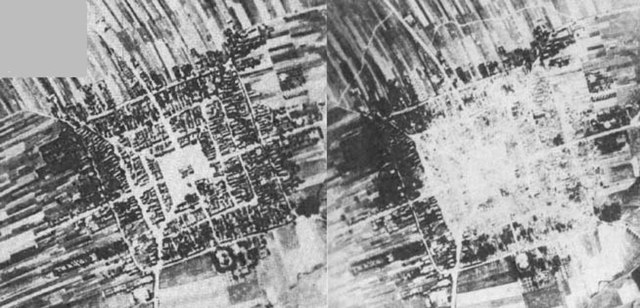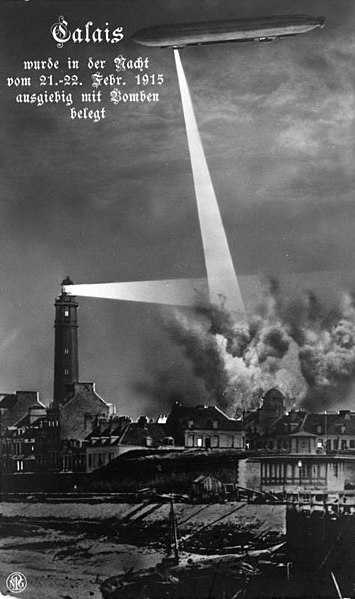The aerial bombing of cities is an optional element of strategic bombing, which became widespread in warfare during World War I. The bombing of cities grew to a vast scale in World War II and is still practiced today. The development of aerial bombardment marked an increased capacity of armed forces to deliver ordnance from the air against combatants, military bases, and factories, with a greatly reduced risk to its ground forces. The killing of civilians and non-combatants in bombed cities has variously been a deliberate goal of strategic bombing, or unavoidable collateral damage resulting from intent and technology. A number of multilateral efforts have been made to restrict the use of aerial bombardment so as to protect non-combatants and other civilians.
Only ruins left after the aerial Bombing of Guernica by the Condor Legion of Nazi Germany's Luftwaffe (1937).
The results of German bombardment in Warsaw, Poland (1939).
Frampol before (left) and after (right) the German Luftwaffe bombing raids in September 1939 during early World War II (the town was almost completely destroyed).
The remains of German town of Wesel after intensive Allied area bombing in 1945 near the end of World War II (a destruction percentage of 97% of all buildings).
Strategic bombing is a systematically organized and executed attack from the air which can utilize strategic bombers, long- or medium-range missiles, or nuclear-armed fighter-bomber aircraft to attack targets deemed vital to the enemy's war-making capability. It is a military strategy used in total war with the goal of defeating the enemy by destroying its morale, its economic ability to produce and transport materiel to the theatres of military operations, or both. The term terror bombing is used to describe the strategic bombing of civilian targets without military value, in the hope of damaging an enemy's morale.
Tokyo after the massive firebombing attack on the night of March 9–10, 1945, the single most destructive raid in military aviation history. The Tokyo firebombing cut the city's industrial productivity by half and killed around 100,000 civilians.
A 1918 Air Raid rehearsal, evacuating children from a hospital.
German airship bombing Calais on the night of 21–22 February 1915
Ruins of Guernica (1937)







